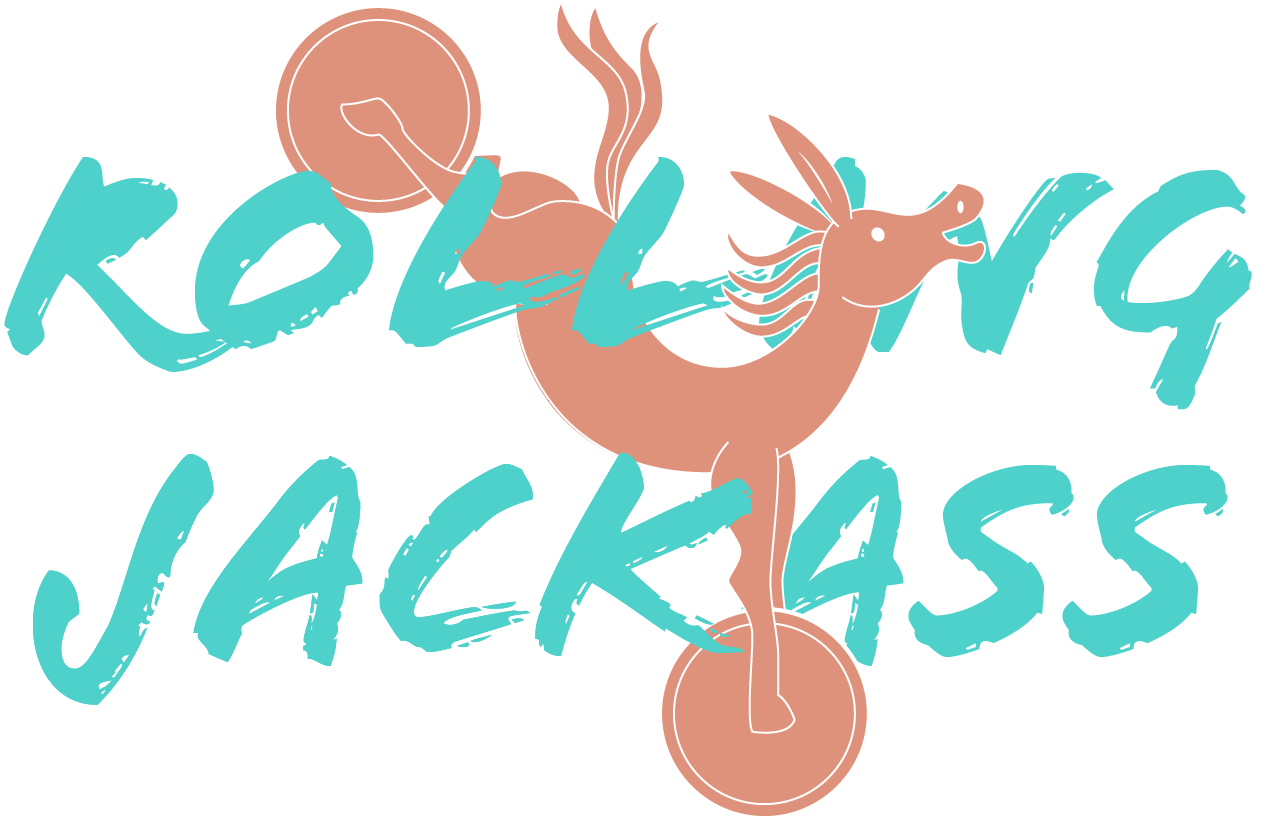Installing the Rolling Jackass on a Surly Big Easy
This model Rolling Jackass is substantially different from all other models and requires more assembly. If you are not comfortable with any of these steps, we recommend having your local bike shop do the installation.
Note that this product installs through the front lateral cross tube, so it is not compatible with other products that install in that tube such as Xtracycle WideLoaders or Footsies.
Put a little grease on the first few threads of all hardware to prevent galling of the threads. This is especially important on the Big Easy RJ because all the components are stainless steel, which has a greater tendency to gall.
This photo shows the contents of the package you will receive. From left to right: non-drive-side (NDS) leg, drive-side (DS) leg, shaft, spring bracket, feet, bushings, spring, knarp, and brake lever.
If you have a traditional kickstand installed, remove it now. Install the spring bracket in its place using the provided M10 bolt and nylock nut.
Install the bushings in the ends of the cross tube. They should be a light press fit, easy to tap in with a soft hammer, but not loose enough to push in by hand.
Slide the shaft through the bushings. The cross tube is slightly bowed due to welding, so the shaft will have a sloppy fit in a single bushing, but tight once it is pushed through both.
Slip the NDS leg onto the shaft, slip the M6 x 25 bolt through the hole, and tighten the nylock nut to 8 Nm. Do not install the DS leg yet.
Back the shaft out of the bushings just a little so the bumper on the NDS leg can freely rotate up past the frame. In this position, you can install the spring without having to pull it tight--one end over the hook on the spring bracket and the other end over the M6 bolt permanently installed on the NDS leg.
Tension the spring by rotating the leg back down, push the shaft in all the way, and the bumper on the leg will now prevent the leg from rotating up and releasing the spring.
Install the DS leg and clamping bolt, tightening to 8 Nm.
Clamp the lever to the handlebars in a location that allows it to be pulled all the way to the bar, without interference. Route the actuation cable housing alongside the rear brake cable and make a small loop to enter the cable stop on the spring bracket, retaining with zip ties.
Pull the cable through the barrel adjuster and through the small hole in the NDS leg. Clamp the knarp onto the cable to retain it. Achieving just the right cable tension is a little tricky and may involve some trial and error. It helps to use a bike shop tool called a 4th hand, or to push the legs down a little to give yourself some slack in the cable when installing the knarp.
Actuate the stand by pulling on the lever, and pull the bike back and up onto the stand. Take note of the elevation of the tire which has been lifted off the ground. Too high and it will be difficult to set the bike onto the stand, especially when loaded. Too low, and the bike may be unstable when parking on uneven or soft ground. Aim for about 1/2” by adjusting the threaded feet. Lock the feet in place by tightening the jam nuts against the leg with a 9/16” wrench.
Double check that the cable tension is sufficient to actuate the stand. When the lever is pulled all the way to the handlebars, the feet of the stand should be touching the ground. If not, there is a barrel adjuster on the lever, and one at the base of the stand that will allow you to fine tune the cable tension.
The stand is now ready for use!

